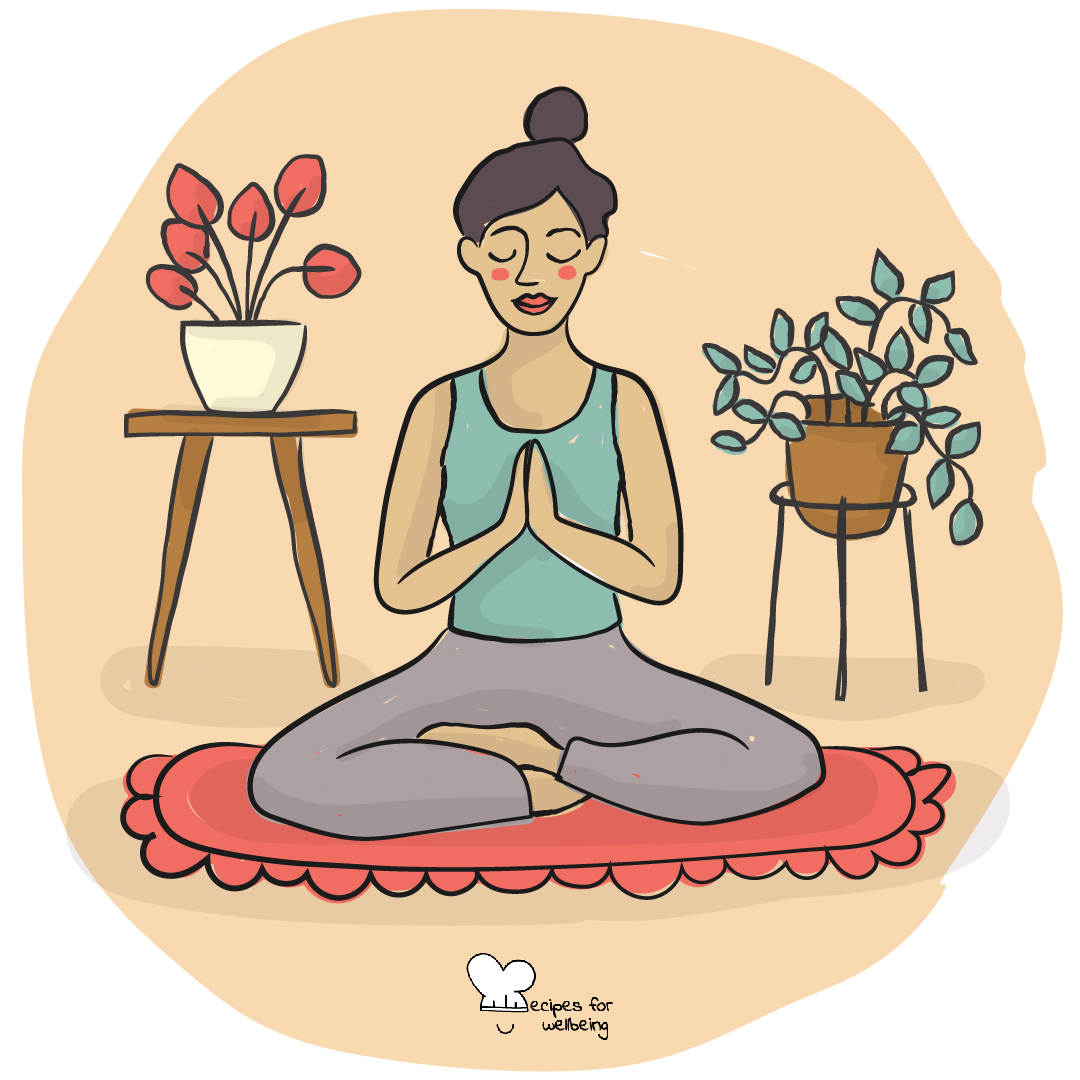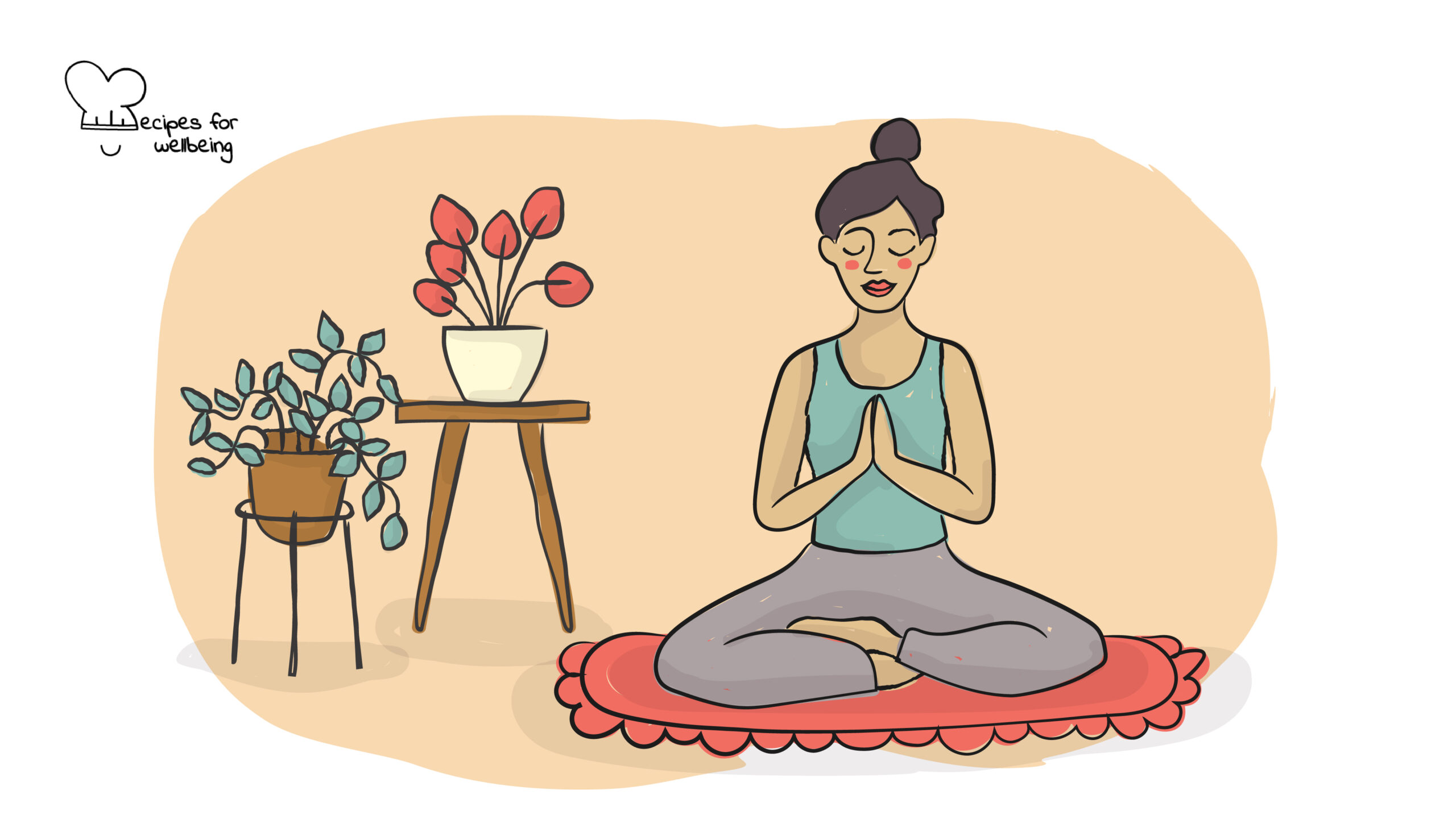
Embodied breathing meditation
Meditation is not a means to an end. It is both the means and the end. ―Jiddu Krishnamurti
👥 Serves: 1 person
🎚 Difficulty: Easy
⏳ Total time: 11-30 minutes
🥣 Ingredients: A quiet space without distractions, an easy set-up to sit, stand, or lie down
🤓 Wholebeing Domains: Awareness
💪 Wholebeing Skills: Breathing, Centring, Embodiment, Mind-body-connection, Movement, Presence

Embodied breathing meditation
📝 Description
A guided practice to connect the breath with gentle meditative movement.
Our breath is always here for you, at any given moment in your life. As Jon Kabat-Zinn says, “As long as you are breathing there is more right with you than wrong with you.” That said, the breath and its ongoing natural undulations can be a gateway to presence, a bridge to the here and now. However, sometimes our minds run wild and simply bringing our awareness to the breath is extremely hard – making us feel even more restless.
The following recipe guides you through a meditation practice to coordinate the breath with some gentle meditative movement to ground yourself and to shift from mental activity to a somatic, non-conceptual experience. This recipe has been kindly donated by Léa Hartman of Perspectives of Presence. You can read the steps below or listen to Léa guiding you through the practice.
👣 Steps
Step 1 – Introduction
Introducing the breath as a constant flow and how involving movement can bring the breath a bit more to life in the body.
Step 2 – Set yourself up comfortably
Find a comfortable seated position, with a straight back, but not stiff. You can also stand or lie down if it feels more comfortable at this moment.
Let yourself settle in and arrive in the position you chose. Dedicate this time only for this practice, letting the memories in the past and the projections in the future. Connect to the present moment. You can close your eyes or simply keep a soft, effortless gaze on a point in front of you.
You’re welcome to set an intention, find your motivation for this practice. Optional if it feels supportive.
Step 3 – Breath awareness
Slowly, become aware of your natural breath, entering and leaving the body. Carrying oxygen in your body on the inhale, and releasing toxins on the outbreath. Connecting to the nurturing quality of the inbreath and the releasing quality of the outbreath.
Step 4 – Sense of touch and release on the outbreath
And now, bring your palms together in front of your chest, palms touching and with the thumbs resting on the lowest point of your sternum. Feeling the contact of the hands touching each other and resting on your chest.
Letting the sense of touch be the primary sense to feel into this moment. Intentionally pressing the hands together with more intensity as you breathe in fully at the same time. Hold the breath at the end of the inhale and hold the hands pressing. And then release the breath and the pressing. You can let a sigh out through the mouth if it feels nice.
Step 5 – Embody your breath with movement
And then start to translate the rhythm of your breath with the movement of your hands and fingers. Opening the hands or only the fingers on the inbreath, and bringing them back to touch on the outbreath, following the natural rhythm of your breath.
Let 50% of your awareness be with the sensations in your hands and 50% with the breath (this is just to give an idea but there’s really no wrong way to experience it). Or you can choose to let the breath fade into the background and focus only on feeling the movement of your hands, the sense of touch that is very concrete and non-conceptual. Making this exploration easy and enjoyable for yourself.
Step 6 – And back to breath, your natural breath
And then slowly bring your hands to rest, bring them down again, to reconnect simply to your breath, the nurturing quality of the inbreath and the releasing quality of the outbreath. Qualities that are inherent to this movement, so nothing to do, nothing to force.
Allowing yourself to sink a little deeper into the breath for the last remaining minutes of the practice. Just this breath. And this breath.
Step 7 – Wrap up, connect to your surroundings
Now, opening your senses to the environment around you, the shades of lights, the temperature of the room, the smells and scents.
Let your body start to move exactly how it wants to move and stretch and give it just what it needs at this moment.
Take a moment to thank yourself for taking the time to practise and reflect on the qualities of the meditation you’d like to take with you along your day or evening.

